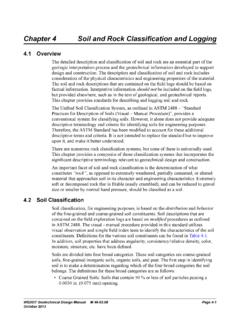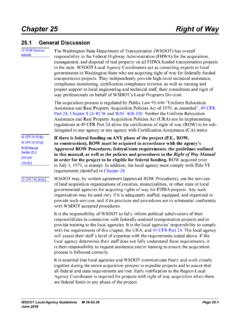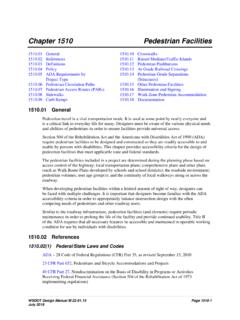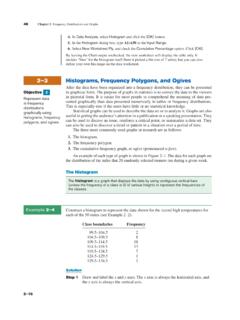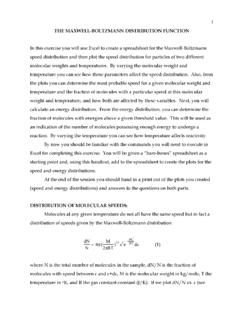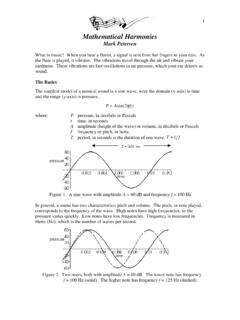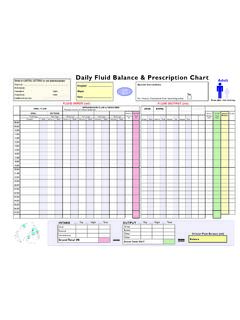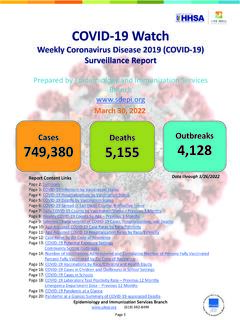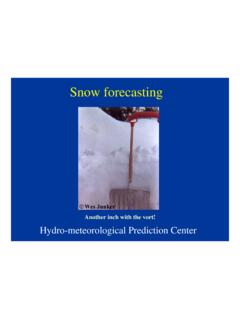Transcription of Chapter 1250 Cross Slope and Superelevation
1 WSDOT Design Manual M Page 1250-1 September 2021 Chapter 1250 Cross Slope and Superelevation General Roadway Cross Slope Superelevation Rate Selection Existing Curves Turning Movements at Intersections Runoff for Highway Curves Runoff for Ramp Curves Documentation References Exhibit 1250-1 Minimum Radius for Normal Crown Section Exhibit 1250-2 Minimum Radius for Existing Curves Exhibit 1250-3 Side Friction Factor Exhibit 1250-4 Superelevation Rates (10% Max) Exhibit 1250-5 Superelevation Rates (8% Max) Exhibit 1250-6 Superelevation Rates (6% Max)
2 Exhibit 1250-7 Superelevation Rates for Intersections and Urban Roadways 40 mph and slower Exhibit 1250-8 Superelevation Transitions for Highway Curves Exhibit 1250-9 Superelevation Transitions for Highway Curves Exhibit 1250-10 Superelevation Transitions for Highway Curves Exhibit 1250-11 Superelevation Transitions for Highway Curves Exhibit 1250-12 Superelevation Transitions for Highway Curves Exhibit 1250-13 Superelevation Transitions for Ramp Curves Exhibit 1250-14 Superelevation Transitions for Ramp Curves General Use this Chapter to design roadway Cross slopes and Superelevation .
3 Cross slopes function to drain water away from the roadway and 2% is a commonly used Slope rate. To maintain the design speed, highway and ramp curves are usually superelevated to overcome part of the centrifugal force that acts on a vehicle. Roadway Cross Slope (1) Lanes The Cross Slope on tangents and curves is a main element in roadway design. The Cross Slope or crown on tangent sections and large radius curves is complicated by the following two contradicting controls: Reasonably steep Cross slopes aid in water runoff and minimize ponding as a result of pavement imperfections and unequal settlement.
4 Steeper Cross slopes are noticeable in steering, increase the tendency for vehicles to drift to the low side of the roadway, and increase the susceptibility of vehicles to slide to the side on icy or wet pavements. A 2% Cross Slope is normally used for tangents and large-radius curves on high and intermediate pavement types, although Cross slopes may vary from the target 2%. The algebraic difference in Cross slopes is an operational factor that can affect vehicles making a lane change across a grade-break during a passing maneuver on a two-lane two-way roadway.
5 Its influence increases when increased traffic volumes decrease the number and size of available passing opportunities. On ramps with metering, consider how Cross slopes can impact driver comfort within the queue. Additionally, larger Cross slopes may present concerns about maintaining vehicle lateral position within the queue lane, depending on weather and resulting pavement conditions. Chapter 1250 Cross Slope and Superelevation WSDOT Design Manual M Page 1250-2 September 2021 A somewhat steeper Cross Slope may be needed to facilitate recommended drainage design, even though this might be less desirable from an operational point of view.
6 In such areas, consider not exceeding design Cross slopes of with an algebraic difference of 5%. For a two-lane two-way roadway, provide an algebraic difference to meet the appropriate conditions stated above except when drainage design recommends otherwise. (2) Shoulders Shoulder Cross slopes are normally the same as the Cross slopes for adjacent lanes. With justification, shoulder slopes may be increased to 6%. On the high side of a roadway with a plane section, such as a turning roadway in Superelevation , the shoulder may Slope in the opposite direction from the adjacent lane.
7 The maximum difference in slopes between the lane and the shoulder is 8%. Locations where it may be desirable to have a shoulder Slope different than the adjacent lane are: Where curbing is used. Where shoulder surface is bituminous, gravel, or crushed rock. Where overlays are planned and it is desirable to maintain the grade at the edge of the shoulder. On divided highways with depressed medians where it is desirable to drain the runoff into the median. On the high side of the Superelevation on curves where it is desirable to drain stormwater or meltwater away from the roadway.
8 At intersections where pedestrian signal accommodations are provided within the shoulder Where extruded curb is used, see the Standard Plans for placement (see Chapter 1239 for information on curbs). Widening is also normally provided where traffic barrier is installed (see Chapter 1610 and the Standard Plans). On ramps with metering, where the shoulder is or could be utilized for queuing, consider how the shoulder Cross Slope can impact driver comfort within the queue. Additionally, larger shoulder Cross slopes may present concerns of maintaining vehicle lateral position within the queue lane, depending on weather and resulting pavement conditions.
9 The remainder of this Chapter provides information to design Superelevation . Superelevation Rate Selection The maximum Superelevation rate allowed is 10%. Depending on design speed, construct large-radius curves with a normal crown section. The minimum radii for normal crown sections are shown in Exhibit 1250-1. Superelevate curves with smaller radii as follows: Exhibit 1250-4 (emax=10%) is desirable for all open highways, ramps, and long-term detours, especially when associated with a main line detour. Exhibit 1250-5 (emax =8%) may be used for freeways in urban design areas and areas where the emax =6% rate is allowed but emax =8% is preferred.
10 Exhibit 1250-6 (emax =6%) may be used with justification for non-freeway highways in urban design areas, in mountainous areas, and for short-term detours, which are generally implemented and removed in one construction season. Exhibit 1250-7 may be used for turning roadways at intersections, urban managed access highways with a design speed of 40 mph or less, and with justification ramps in urban areas with a design speed of 40 mph or less. Chapter 1250 Cross Slope and Superelevation WSDOT Design Manual M Page 1250-3 September 2021 When selecting Superelevation for a curve, consider the existing curves on the corridor.






